Survey:
How Personal Trainers Find New Clients
As the New Year approaches, fitness professionals and facilities are preparing strategies to attract as many new clients as possible.
According to ABC Fitness’s Q1 2024 report, gym check-ins are almost double pre-pandemic levels and net new fitness studio memberships are up 11%. Exercise professionals are also benefiting from this trend, with ABC Trainerize (the popular personal training app) reporting a 78% increase in new personal training clients year-over-year.
Personal trainers can capitalize on industry trends by proactively managing their job searches, marketing, and business practices, including securing their own liability insurance — an often overlooked necessity for independent contractors.
To help trainers prepare for the upcoming recruitment boom, we surveyed personal trainers to uncover their top strategies for attracting and retaining clients in this competitive market.
Key Takeaways
69% of personal trainers state they gain new clients primarily through word of mouth referrals.
New Me not just for the New Year
While 30.2% of trainers say their inquiries remain consistent throughout the year, 36.4% say they get most of their new clients in January.
Everyone loves a deal
62% of trainers responded that the best methods for converting new clients to returning ones involved some type of initial deal or preliminary assessment.
More rapport
Trainers say their clients care more about personality and connection (29.5%) than they do cost (19.4%) or convenience (14.7%) when choosing a CPT.
Social marketing
Over half (51.9%) of surveyed fitness professionals use social media platforms for marketing, with Instagram (27.9%) and Facebook (24%) being the most popular choices.



How to Find New Personal Training Clients:
Who, When, Where
The large majority (69%) of personal trainers still find new clients primarily through word-of-mouth referrals from existing clients. Networking, client rapport, and building strong relationships with existing clients are all important practices for trainers throughout their careers.




36.4% of surveyed trainers confirmed they get most of their new clients in January around the new year.
30.2% say that they receive consistent new client inquiries throughout the year.
Utilizing smart client recruitment tactics helps keep you working the hours you need as clients invariably come and go all year.
55% of our trainers report the majority of their new clients are 46 years of age and up. 39.5% are between 26 and 45, and only 5.4% are under 25.
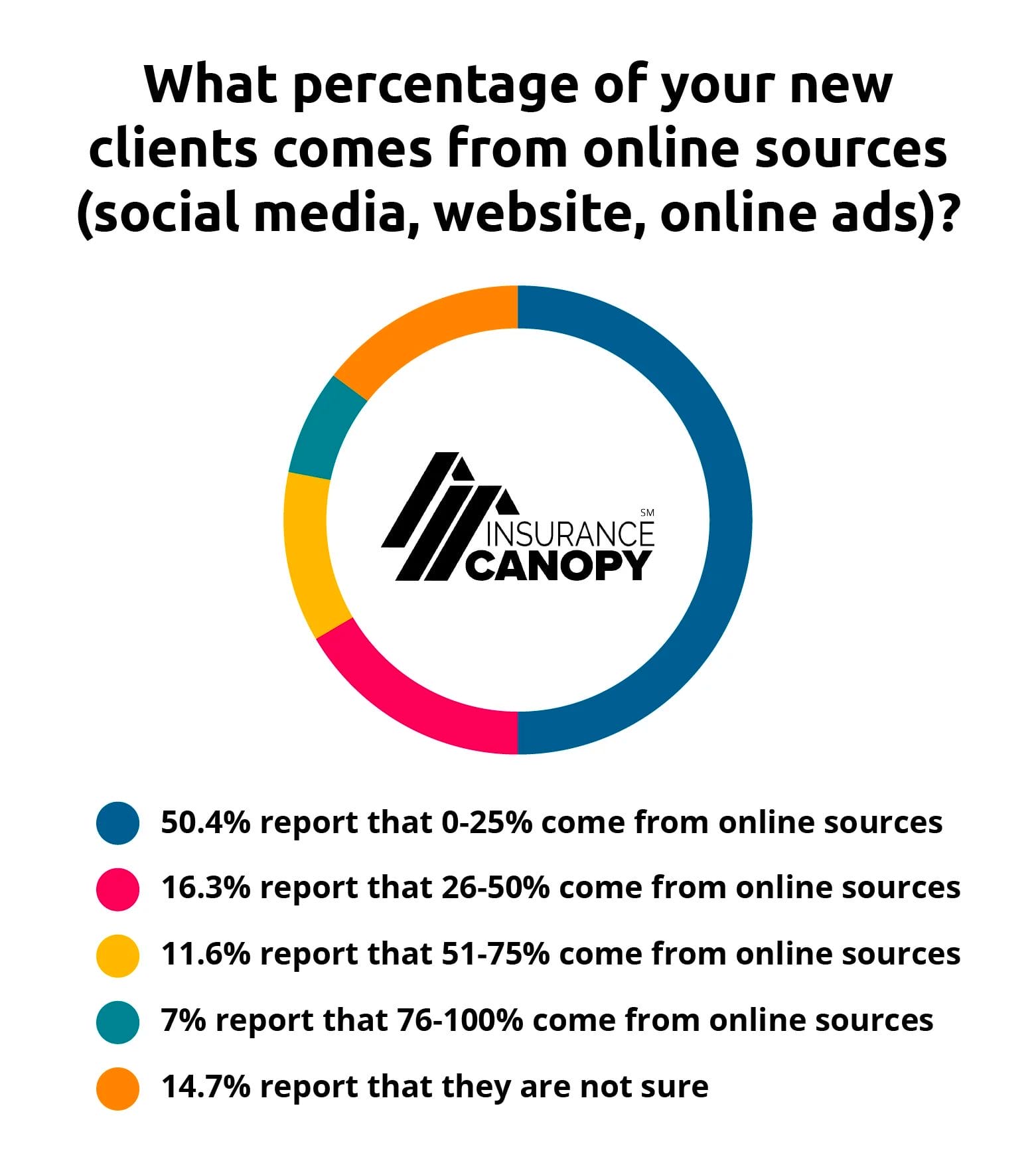
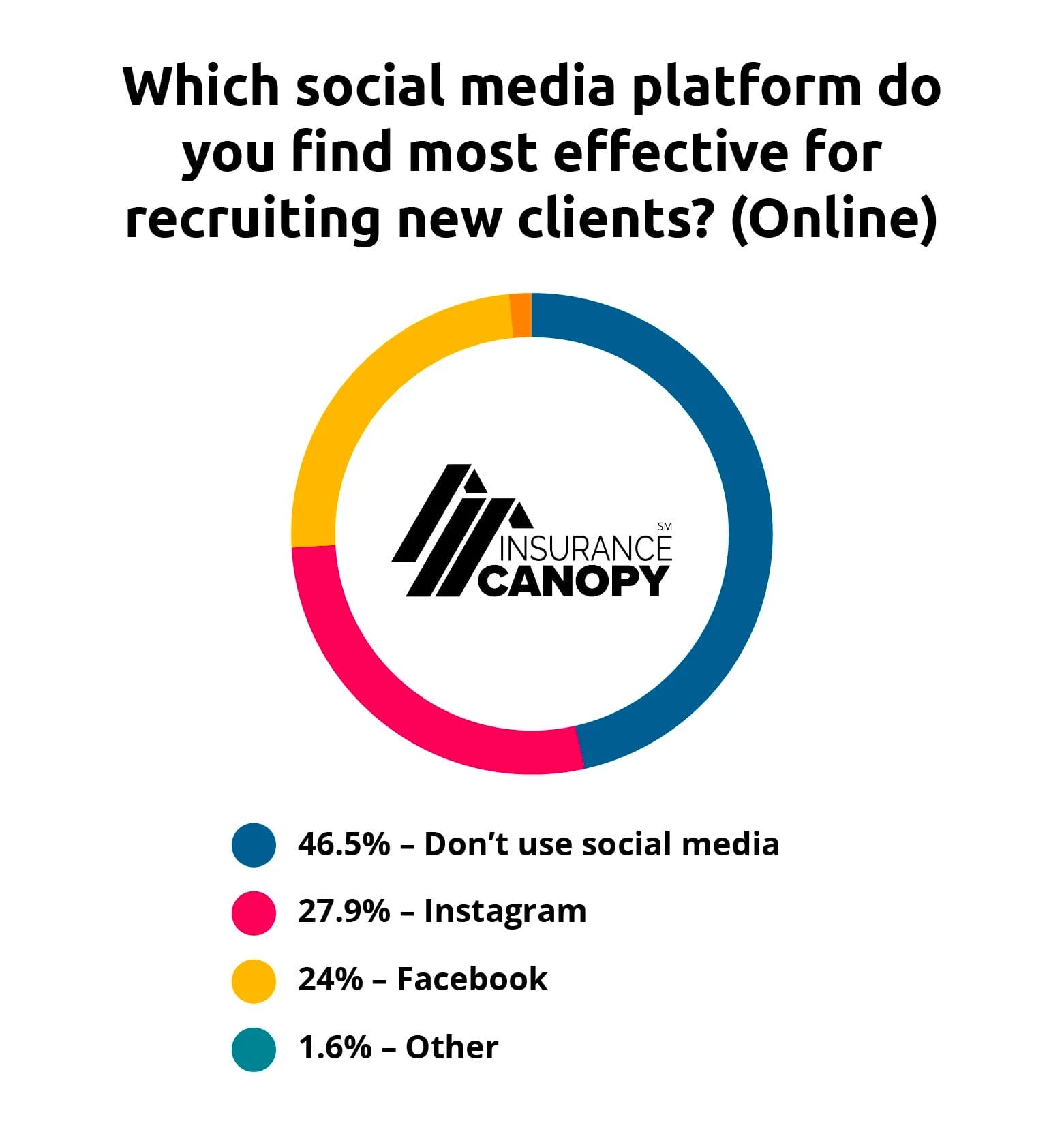

Digital Marketing For Personal Trainers
51.9% utilize either Instagram or Facebook for their online marketing.
Half of surveyed trainers reported that fewer than 25% of their new clients come from social media or online sources — further emphasizing the importance of networking and word-of-mouth for client recruitment.
On the other hand, 55.6% of respondents primarily work with clients ages 46 and older, and of these 29% use some kind of social media for recruitment purposes. Of the other trainers who work with clients ages 45 and younger, 81% use social media for recruitment purposes.


It stands to reason that personal training advertising and the success of social media marketing efforts depend on trainers’ target clientele.
21.7% say sharing client testimonials or success stories is the most effective content for new client recruitment.
Given that 62% of the world is on social media an average of 2 hours per day, social media may be an underutilized tool for independent personal trainers and smaller fitness facilities.
We know that personal trainers’ use of social media as a recruitment tool may also be tied to the gym or studio where they work. Many facilities maintain control of pricing, rates, marketing etc. Even if that is the case, you may still have the option to promote yourself outside of your gym’s channels.
Out of the 51.9% of trainers who reported using social media, 21.7% of those reported that client testimonials were the most effective content to share. And since 69% of trainers get new clients primarily via word of mouth, check if your existing clients would mind sharing or posting reviews of your services, or about how much they enjoy working with you on their own channels.

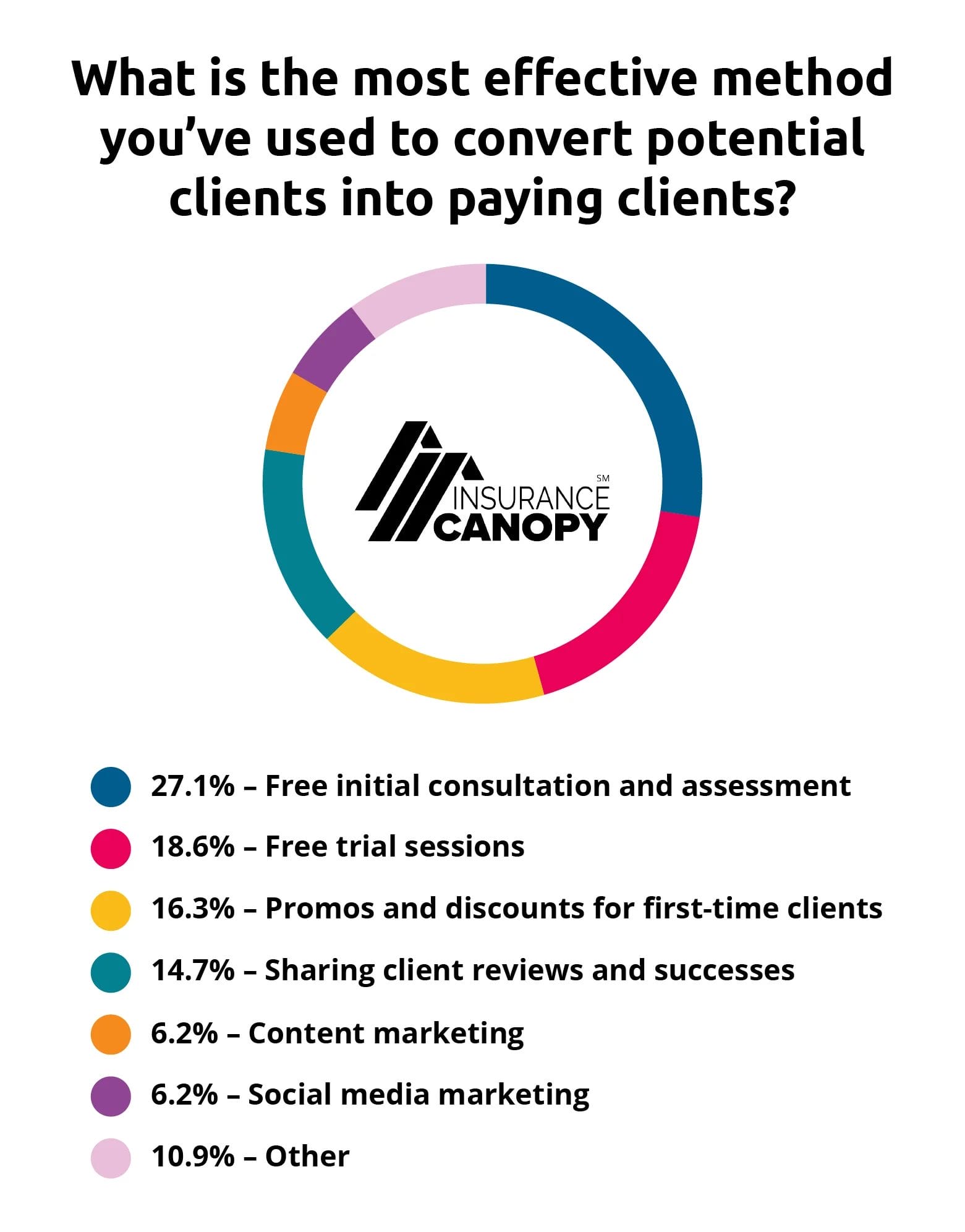
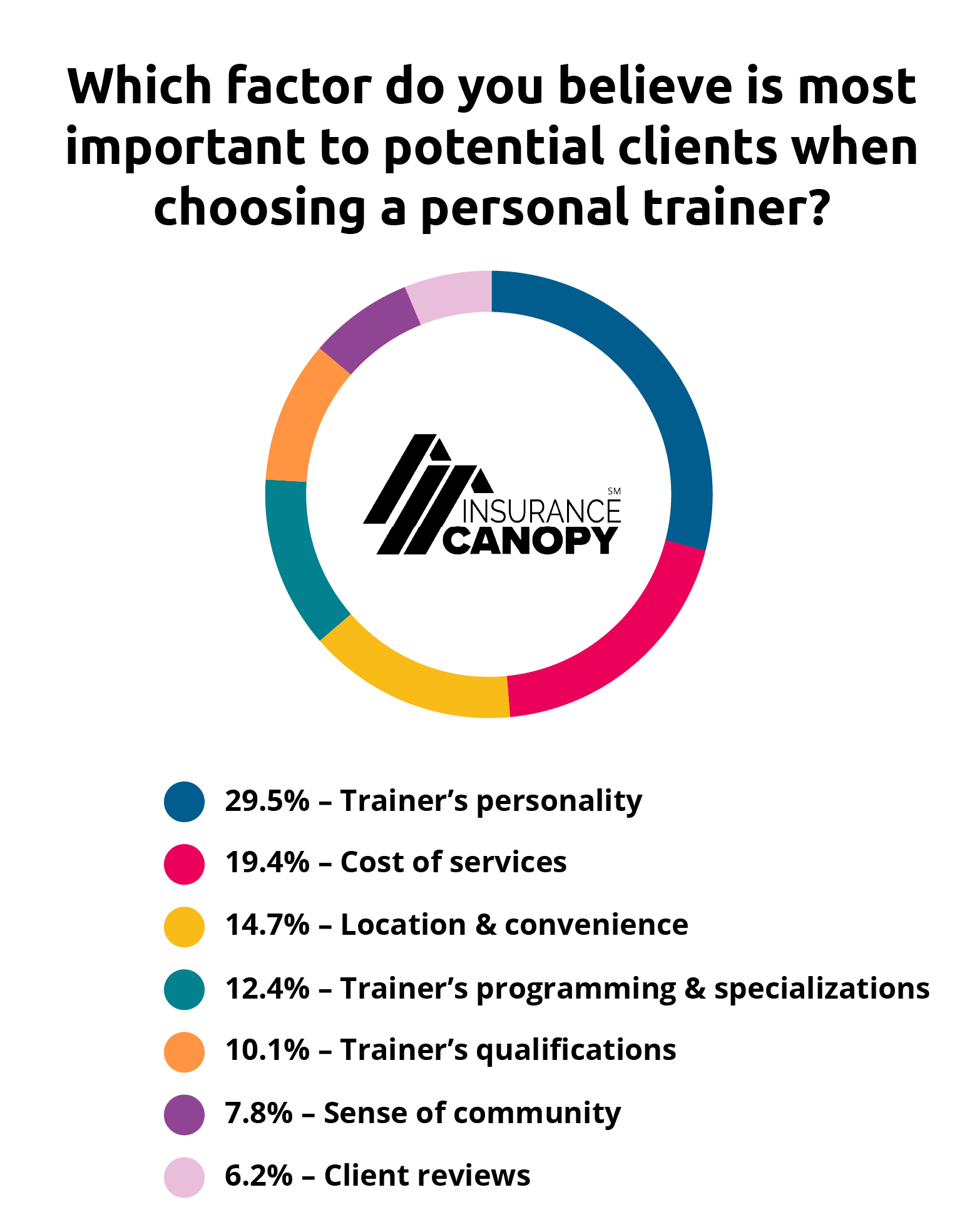
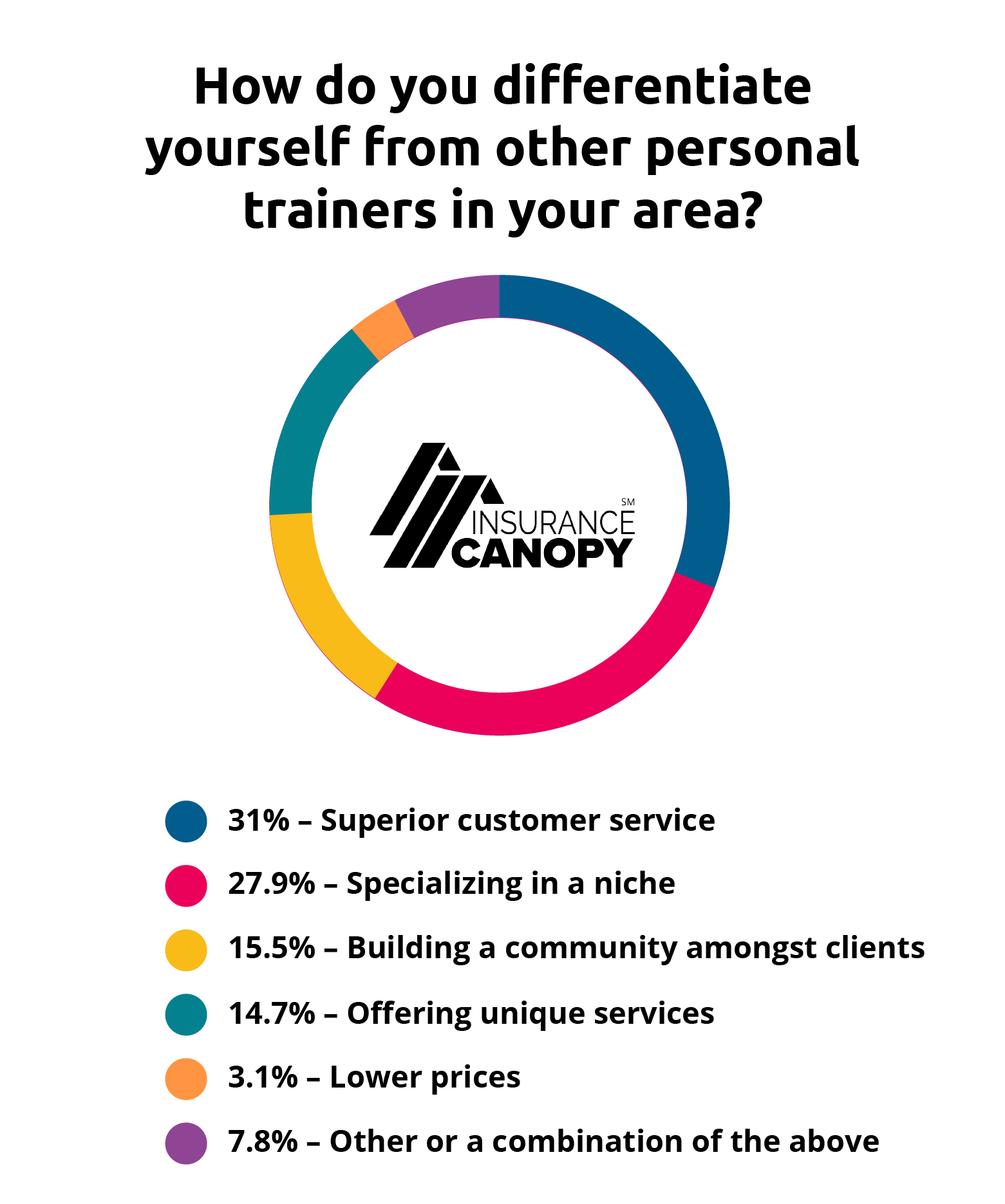
How to Get New Clients in the Door

New prospective clients may also need to join the gym first (i.e., pay for a membership) before they can even consider a personal trainer. And these costs can deter new participants from paying to work with a trainer individually.
Consider offering small group training, special new-client deals or promos, or free introductory assessments.
According to 62% of surveyed trainers, offering some kind of free initial assessment or special promotion proved most effective in converting potential clients into paying ones.
- 27.1% reported offering one free initial consultation/assessment
- 18.6% recommended offering said free trial sessions
- 16.3% incorporate new client special promotions and discounts in general.


Getting potential clients to put one foot in the proverbial door can be the hardest part of recruitment. But once you do, it lets you begin to establish a relationship with the person.
You can also take this time to educate them about the benefits of working with a trainer over trying to get fit on their own, especially if they’re newer to exercise as a whole.
52% of trainers cite their personality, knowledge, and programming as the most important factors for clients when choosing to work with a trainer.
- 29.5% say trainer personality and approachability is the most important
- 12.4% say it’s programming
- 10.1% say it’s trainer qualifications and knowledge
It’s interesting to note that trainer personality on its own beat out cost of services (19.4%) and convenience of location (14.7%) as the most important factor to clients when choosing a personal trainer.


Working with very small groups could be a win for both you and your clients. You can earn more as a trainer by working with two or three people at once, and the individuals each pay less for the same amount of time.
Advertising small group sessions may encourage new members to work out with you together. Having a partner to attend sessions with can also increase both participants’ drive to show up and stick with it.



Trainers also reported specializing in a niche (27.9%) and building a sense of community (15.5%) as key ways to stand out.
Specialization could take the form of completing additional courses to become an expert in something like senior fitness, maternity fitness, postpartum fitness, functional fitness, or another niche.
This could also mean you work to become known as the most fun group exercise instructor, the most relaxing yoga teacher, the most knowledgeable strength coach, or whatever you enjoy the most.
Analysis conducted by IBISWorld.com predicts that the demand for specialized fitness professionals will rise significantly in the near future.

Real Insights From Real Fitness Professionals
What is your most effective tactic for recruiting new clients?
“Word of mouth referrals…also many of my class participants want to further their learning via personal attention,” says Jennifer Ramsey, a full-time NCSF-Certified Personal Trainer and Certified Forest Therapy Guide. “Additionally, I spend our first session together getting to know them and establishing rapport.”
Matthew Mullens, Navy veteran and owner of FleetFitness LLC in Huntsville, Alabama cites ads on social media as their most successful method, along with their distinctive wrapped van that stands out in the community.
What do you feel sets you apart from your competitors?
Jennifer, who retired from her longtime corporate career to go into fitness, has been training full-time for over 9 years. She says the fact that “they know I can relate to many of their constraints” is what helps her stand out from other personal trainers.
“We bring the equipment to them and the trainer to the client wherever they want to work out – usually the house,” says Mullens of FleetFitness.
What tips do you have for new trainers that want to build their client base?
“Start by substituting for class instruction. Everyone needs subs,” Ramsey says. “It builds experience working with different skill levels and personalities [and] provides income while [your] client base is still growing.”
Pump Up Your Marketing

Given a relatively low barrier to entry into the personal training industry, and a high level of competition for clients, it can be a challenge for trainers to build a sustainable book of business quickly. Which likely contributes to the fact that 57% of trainers only stay in the industry for two years or less.
Our findings show that personal training clients appreciate superior customer service, and we encourage personal trainers and fitness professionals to consider their advertising methods depending on their audience.
While clients over the age of 45 are primarily sought out through word of mouth and referrals, clients 45 and under may require additional social validation from online media that trainers produce themselves to get bought in.
We also recommend that aspiring trainers whose goal is to work full time in fitness remember to set realistic expectations for themselves, just as they would their clients. It is reasonable to anticipate at least six months or even a year to go from zero to a steady, full-time base of clients.
Even if your goal is to maintain a consistent part-time schedule, these insights can help you plan for the near (and foreseeable) future, hone your recruitment methods, and improve your business practices overall.

Methodology
The survey was conducted between September 5 and September 11, 2024, using email invitations and an online Google Forms survey. The survey targeted United States-based personal trainers and fitness professionals. There were 133 respondents, 34% of whom identify as full-time and 65% of whom identify as part-time.

